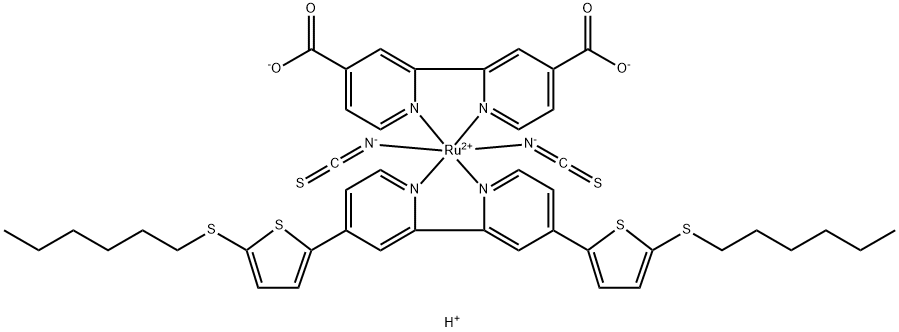
cis-Bis(isothiocyanato)(2,2′-bipyridyl-4,4′-dicarboxylato)( 4,4′-bis(5-(hexylthio)thiophen-2-yl)-2,2′-bipyridyl)ruthenium(II)
- Product Namecis-Bis(isothiocyanato)(2,2′-bipyridyl-4,4′-dicarboxylato)( 4,4′-bis(5-(hexylthio)thiophen-2-yl)-2,2′-bipyridyl)ruthenium(II)
- CAS1152310-69-4
- MFC44H43N6O4RuS6-
- MW1013.3
- EINECS
- MOL File1152310-69-4.mol
Chemical Properties
| form | powder (black) |
| color | Black |
| λmax | 313 +/- 15 nm at 0.02 mM in DMF 348 +/- 15 nm at 0.02 mM in DMF 540 +/- 15 nm at 0.02 mM in DMF |
| Melting point | 196 °C (lit.) |
| solubility | Acetonitrile and tert-butyl alcohol (volume ratio: 1/1) |
Safety Information
| Hazard Codes | Xi |
| Risk Statements | 36/37/38-43 |
| Safety Statements | 26 |
| WGK Germany | 3 |